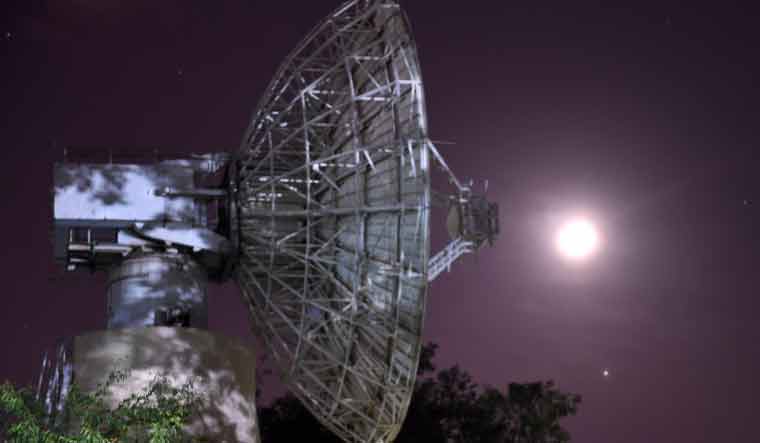The bleak hope that Indian Space Research Organisation (ISRO) had of trying to establish contact with the lander of its Chandrayaan 2 mission has fizzled out with the lunar night descending over the region of the moon where the lander crashed on September 7. The proposed mission life of the lander was only 14 days, or one lunar day, after which its solar-powered batteries would drain out.
Even if ISRO had managed to get in touch with the lander, it would not have amounted to much in terms of the scientific experiments that were supposed to have been carried out. ISRO lost contact with the lander during its powered descent to the lunar surface. The altitude at that time was 2.1 km. Even accounting for the weaker gravity on the moon, the altitude was still considerable. And given the speed of the lander at that time, 4,859 m/s; at the time of losing contact, the chances of the 1,471 kg Vikram having suffered damages on surface impact are very high. The aim was to reduce the speed to near zero.
So, even if ISRO had managed to get signals from Vikram, the chances that it would have been able to instruct the lander were rather slim. Vikram, with dimensions of 2.5 x 2 x 1.2 m, was supposed to have performed a series of complex manoeuvres on the last leg of its journey. These included a position correction, so that its legs, which were horizontal to the lunar surface, would be pointing downwards, to enable a landing on its feet. Only after a perfect landing would it be able to deploy its onboard instruments, that included a camera. ISRO had programmed Vikram in such a way that the rover, Pragyan would emerge from its belly only four hours after touchdown, by which time any dust that was raised during descent would have settled.
Did all these steps happen? Chances are, they did not. For had they, perhaps the earth stations would have been able to establish some contact, at least. Many things can go wrong during a crash landing — apart from mechanical damage to the body, there would be damage to the electronic circuitry and the antenna. Over the last fortnight, both Chandrayaan 2's orbiter as well as NASA's Lunar Reconnaissance, Orbiter have been trying to locate the lander. The Indian orbiter was at a great altitude — 100 km— so despite the most powerful camera in a lunar mission ever, it has only captured a hazy image.
By the time NASA's orbiter reached the area, the lunar dusk was already descending at the site, and there were long shadows. A clear image, however, is only matter of academic interest— to be able to understand how Vikram looks in its final resting phase, and to be able to glean some idea of what went wrong.
Chandrayaan 2 for India now means its orbiter, which is successfully orbiting around the moon in the intended orbit of 100 x 100 km. Though it was initially announced that its mission life would be for a year, ISRO subsequently said that it had enough fuel to last for another six. Most of the scientific instruments of the mission are on the orbiter. It is hoped that this mission will prove useful and additional to existing knowledge of the moon. In its last communication to the press, ISRO has said that all payloads of the orbiter are powered and initial trials have been completed successfully. Thus, their performance is satisfactory.
Meanwhile, a national committee of experts, comprising academicians and ISRO scientists, are analysing the cause of the communication loss with the lander.



